Managing inventory effectively is one of the most critical aspects of running a successful business. Without proper oversight, inventory-related issues can lead to stockouts, overstocking, or even loss of sales, which can damage both profit margins and customer trust.
A study revealed that only 6% of companies report having full supply chain visibility, underscoring the widespread need for enhanced inventory management solutions.
However, before committing to SAP Inventory Management, it’s essential to evaluate whether its features truly align with your operational requirements. Every business has different needs, and not all systems are built to fit all industries.
Therefore, this article will provide a comprehensive review of SAP Inventory Management, covering its key features and advantages and exploring top SAP alternatives that better suit certain business needs.
Key Takeaways
|
Table of Content:
Table of Content

Introduction to SAP Inventory Management
SAP Inventory Management is a module within the SAP ERP system that helps businesses streamline their inventory activities. It supports goods receipt, goods issue, material movement, and demand planning, ensuring smoother operations across warehouse processes.
The system allows businesses to track stock levels in real time, manage reservations, and analyze inventory data. It improves stock accuracy, supports supply chain planning, and helps reduce inefficiencies through better material visibility and reporting tools.
Key Features and Functionalities
SAP Inventory Management provides core tools for tracking stock levels, managing storage locations, and coordinating logistics across departments. Its interface supports configurable roles and a centralized dashboard for better inventory visibility.
Key features include:
- Inventory monitoring and control: Enables real-time tracking of stock levels and movements to avoid overstocking or shortages.
- Stock valuation and material planning: Supports different valuation methods and aligns inventory needs with material requirements.
- Physical inventory and cycle counts: Helps businesses conduct regular stock checks to maintain accuracy and compliance.
- Discrepancy reconciliation: Identifies and resolves mismatches between recorded and actual stock quantities.
- Inventory analytics and batch tracking: Offers insights on trends, aging stock, and serialized item tracking for better decision-making.
- Integration with SAP modules: Connects with Sales and Distribution (SD), Production Planning (PP), and Finance (FI) for a unified workflow.
Pros and Cons of SAP Inventory Management
SAP Inventory Management offers several strengths that make it a go-to solution for many large enterprises. Its integration with other SAP modules ensures seamless data exchange across departments, which improves supply chain visibility and coordination.
- Comprehensive inventory tracking: Users can monitor real-time stock levels, manage materials, and track item movements across multiple locations.
- Customizable workflows: Businesses can tailor processes to meet specific operational or industry requirements.
- Scalable and modular: SAP is built to support growth, making it suitable for large enterprises with complex inventory needs.
- Detailed reporting tools: Built-in analytics support strategic planning with actionable inventory insights.
- Global compliance support: The system meets a wide range of industry and international standards, supporting global operations.
These strengths contribute to operational efficiency and long-term scalability, making SAP a solid choice for large, process-driven organizations.
Cons of SAP Inventory Management
While SAP Inventory Management offers robust features, it may not be the most suitable choice for every business. Companies considering this solution should weigh several limitations that could impact their operational flexibility, especially if they lack the internal resources to support a complex system.
- High implementation and maintenance costs: Deploying SAP involves not only a high upfront investment in software licensing, but also recurring costs for upgrades, support, and consulting services. These expenses can be significant for SMEs with tighter budgets.
- Complex interface and usability: The system’s interface is built for power users, which may overwhelm new or non-technical staff. Navigating the platform and accessing key functions can feel unintuitive without proper training.
- Customization and integration challenges: Although flexible, customization in SAP often requires developer-level expertise or third-party consultants. Integrating the system with non-SAP tools may also demand additional middleware or APIs.
- Steep learning curve: Mastering SAP Inventory Management takes time. Teams must undergo structured training to fully understand workflows, configuration, and reporting. This can delay adoption and increase training costs.
- Dependency on the SAP ecosystem: SAP Inventory Management delivers optimal performance when used alongside other SAP modules. Businesses using external accounting, CRM, or ERP tools may face limitations in syncing data or achieving full system efficiency.
These challenges underscore the importance of aligning your business needs with what SAP offers, especially if you’re seeking a more agile or cost-efficient solution.
Why HashMicro is the Best Alternative to SAP Inventory Management for Singaporean Companies
While SAP Inventory Management is a powerful tool, its high cost and complexity make it less suitable for businesses looking for greater flexibility, ease of use, and scalability. For those seeking a more agile and cost-efficient solution, HashMicro Inventory Management software stands out as a leading alternative.
One of the biggest advantages of HashMicro’s system is its unlimited user access without any additional licensing costs, ideal for growing businesses with expanding teams. Trusted by over 2,000 clients across Southeast Asia, HashMicro offers industry-specific modules that cater to retail, manufacturing, and supply chain businesses.
Its modular, cloud-based ERP provides end-to-end visibility and streamlined operations across all departments, from inventory and procurement to finance and CRM. You’ll also benefit from a user-friendly interface, fast deployment, and seamless integration with third-party platforms.
Unlimited user access at no extra cost
Unlike SAP Business One, which limits the number of users based on license tiers, HashMicro allows unlimited user access without additional fees. This is ideal for growing businesses that need system access across multiple departments without budget constraints.
Faster deployment and user-friendly interface
HashMicro offers a more intuitive interface with a shorter learning curve, making it easier for teams to adopt the system quickly. With drag-and-drop functions and customizable dashboards, users can navigate features more efficiently compared to SAP’s more complex setup.
Advanced inventory control with real-time automation
HashMicro provides intelligent stock management for thousands of SKUs, complete with real-time tracking, automated stock reordering, and rapid stock opname. This level of automation is more accessible and cost-effective than SAP’s standard offerings.
Built-in production cost control
HashMicro offers built-in tools for tracking and managing production costs end-to-end—from raw materials to finished goods. This allows manufacturers to monitor expenses in real time and optimize production, whereas SAP often requires added modules or custom development.
Cost-effective customization
With HashMicro, businesses can tailor features and workflows to their needs without incurring high custom development costs. SAP, in contrast, tends to require more expensive customizations and third-party consultants for similar flexibility.
If you’re interested in the benefits of the various features above, click the banner below to explore HashMicro’s pricing scheme and see what solution works best for your business.
Conclusion
SAP Inventory Management offers a wide range of features for enterprise-level operations. However, its complexity, licensing model, and limited flexibility may not be suitable for every business, especially those needing scalable, user-friendly solutions.
For businesses seeking a more agile and cost-efficient system, HashMicro presents a strong alternative. With unlimited users, real-time inventory automation, and customizable modules, it offers superior value and usability tailored to growing operations.
Ready to upgrade your inventory management without complexity? Book a free demo with HashMicro today and discover how its flexible management can streamline your workflows and boost business efficiency.
FAQ About SAP Inventory Management
-
Can SAP Inventory Management integrate with third-party logistics providers (3PL)
While SAP is most efficient when used within its own ecosystem, integration with 3PLs is possible through APIs or middleware. However, it may require custom development or support from SAP-certified consultants to ensure smooth data exchange.
-
Does SAP Inventory Management support barcode scanning and RFID technology?
Yes, SAP supports barcode and RFID-based inventory tracking, which can be configured to enhance real-time visibility, improve warehouse accuracy, and speed up order fulfillment.
-
How does SAP Inventory Management handle multi-location warehouses?
SAP allows users to manage and track inventory across multiple locations using plant and storage location codes. Each site can be monitored individually or in aggregate, enabling precise inventory control even in decentralized operations.




































